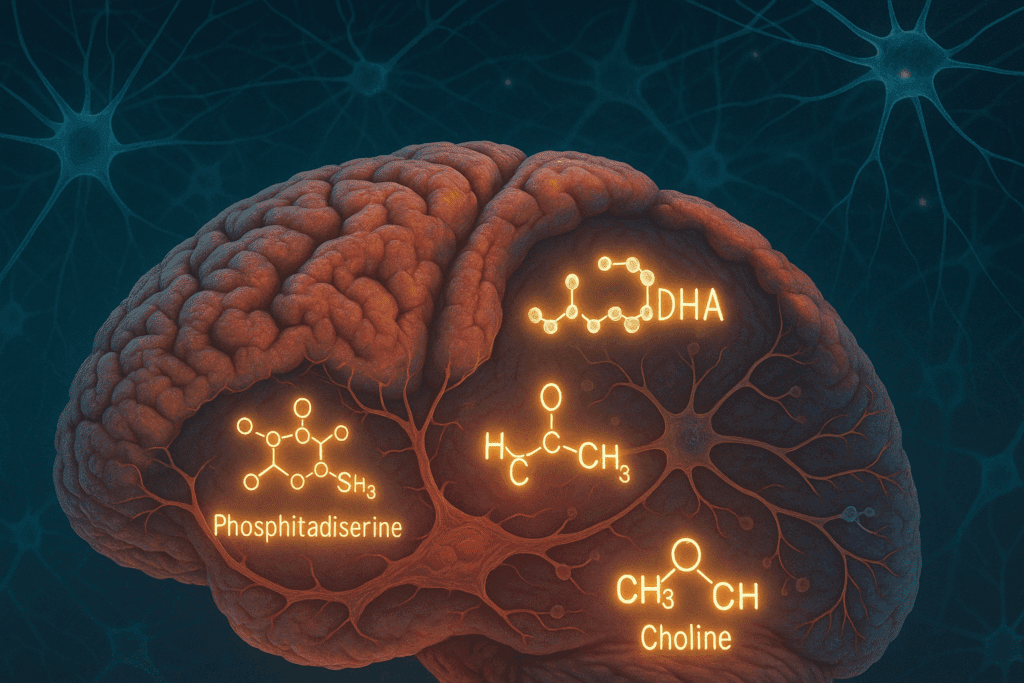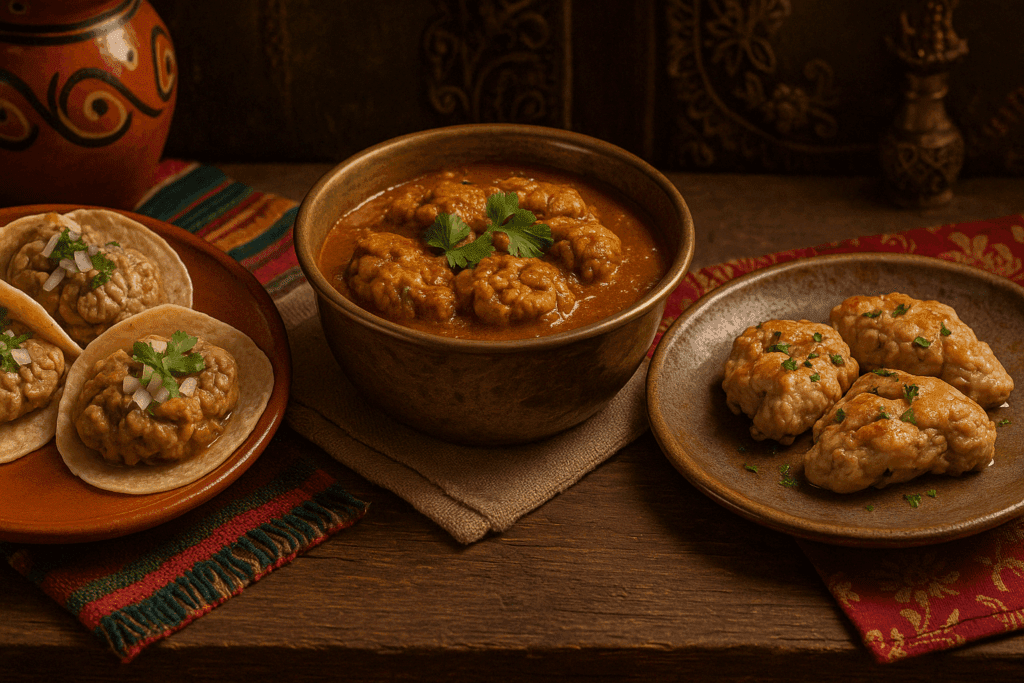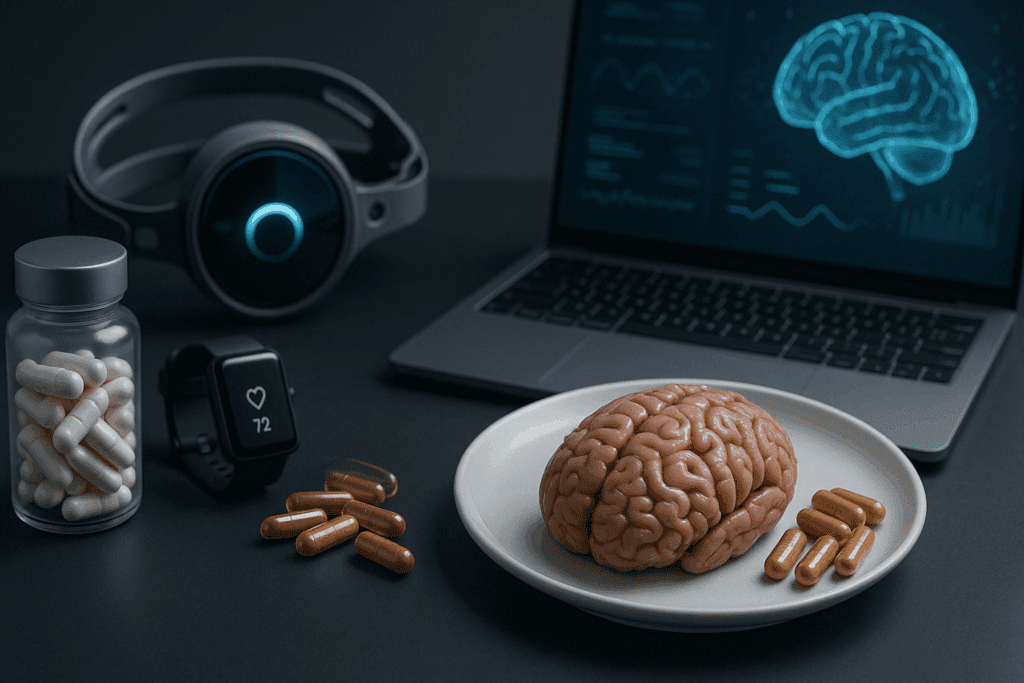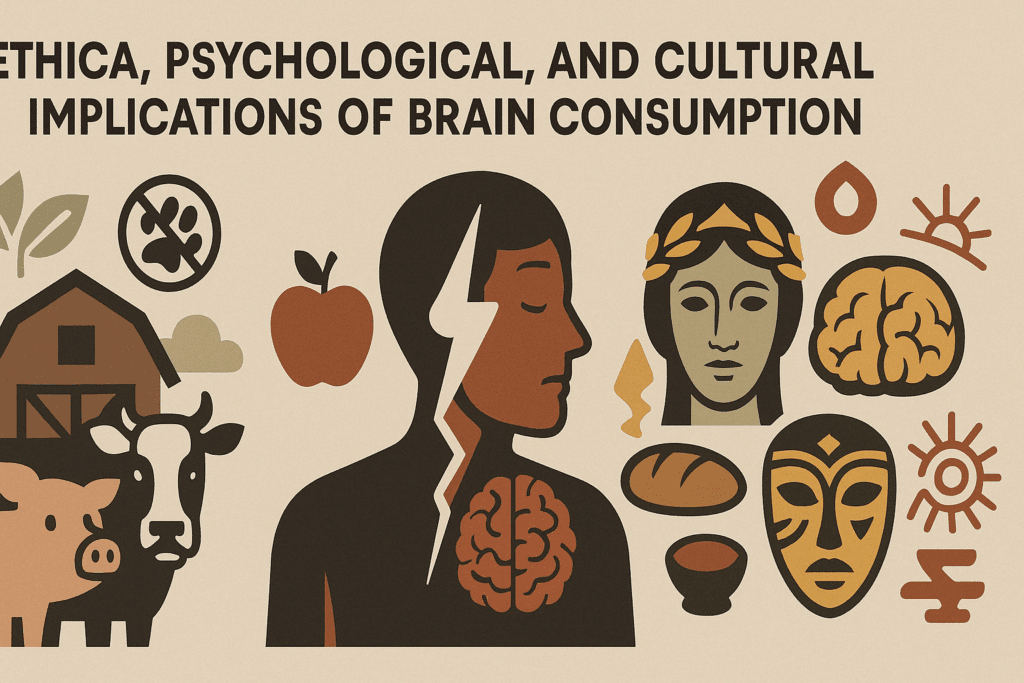The idea of consuming brain tissue—be it from animals or in some fringe cultures, even human—has long existed at the crossroads of anthropology, nutrition, and medicine. But in recent years, this ancient practice has stirred a modern debate in the biohacking and nootropics communities: can we eat brain to improve our own brain function? Is there any legitimate science behind the benefits of eating brain for decision-making, clarity, and cognitive endurance? Or is it a relic of outdated survival practices wrapped in pseudoscientific claims?
You may also like: How to Choose the Best Brain Supplements for Adults: Science-Backed Ingredients That Support Focus, Memory, and Mental Clarity
This question, as bizarre as it may initially seem, merits thoughtful exploration. In the evolving landscape of cognitive enhancement and natural nootropics, nothing is off the table—sometimes quite literally. Brain tissue, rich in cholesterol, phospholipids, and certain essential nutrients, has intrigued researchers and traditional medicine practitioners alike for its potential to support mental performance. Yet, ethical considerations, disease risks, and bioavailability concerns also come into play. As we examine the idea that brain eat practices could offer cognitive advantages, it becomes crucial to untangle cultural myth from biological fact.
Let’s take a closer look at the scientific evidence, nutritional composition, and philosophical implications behind the question: can we eat brain for enhanced focus and mental acuity? More importantly, does doing so truly yield measurable benefits for decision-making and cognitive resilience—or are there safer, more effective nootropic options worth pursuing?

The Nutritional Profile of Brain Tissue and Its Potential Cognitive Benefits
From a purely biochemical standpoint, animal brains are nutrient-dense organs. They contain high concentrations of omega-3 fatty acids—particularly DHA (docosahexaenoic acid), a type of fat essential to brain structure and function in humans. DHA plays a vital role in maintaining membrane fluidity in neurons, supporting synaptic plasticity, and regulating inflammatory responses in the central nervous system. Consuming DHA-rich foods has been linked in multiple studies to better focus, reduced cognitive decline, and improved memory retention.
Animal brain is also rich in phosphatidylserine and phosphatidylcholine, two phospholipids that contribute significantly to neuronal communication. These compounds support myelin sheath integrity and neurotransmitter function—both of which are essential for clear decision-making, especially under stress. When people ask about the benefits of eating brain, these molecular-level mechanisms are often cited as theoretical foundations for its nootropic potential.
In addition, brains are a source of B vitamins, particularly B12 and folate, both of which are essential for neurological health. B12 deficiency is well known to cause cognitive fog, poor memory, and even irreversible nerve damage in severe cases. Given that brain tissue contains some of the most bioavailable forms of B12, proponents of organ meat-based diets argue that incorporating brain eat habits into one’s regimen may offer a direct nutritional path to sharper cognition.
Still, the presence of nutrients alone does not guarantee therapeutic efficacy. The human body’s ability to absorb and utilize those compounds effectively—also known as bioavailability—depends on many variables, including the cooking method, the health of the gut lining, and existing nutritional status. So while the nutritional composition of brain meat is promising on paper, translating those elements into real-world cognitive improvement requires deeper analysis.
Can We Eat Brain Safely? The Role of Prions and Infectious Disease Risks
Any meaningful conversation around brain eat practices must acknowledge the elephant in the room: prion diseases. These are rare, fatal neurodegenerative disorders caused by misfolded proteins that can be transmitted through infected neural tissue. The most notorious example is Creutzfeldt-Jakob disease in humans, which is related to bovine spongiform encephalopathy (commonly known as mad cow disease) in cattle.
When asking “can we eat brain,” safety cannot be overlooked. Ingestion of contaminated brain tissue can result in prion diseases with long incubation periods but rapid progression once symptoms appear. These illnesses are virtually untreatable and always fatal, casting a long shadow over the supposed benefits of eating brain.
That said, not all animal brains carry this risk equally. In regions where livestock regulations are stringent and neurological disease monitoring is robust, the chances of consuming prion-infected tissue are significantly lower. For example, pig and lamb brains are considered safer in some culinary traditions, although regulatory agencies like the USDA and CDC still recommend avoiding neural tissue consumption as a precautionary measure.
From a decision-making optimization perspective, the risk-reward ratio needs to be carefully evaluated. While the potential cognitive enhancement benefits are intellectually intriguing, they remain speculative without robust clinical data. Meanwhile, the health risks—however rare—are severe and irreversible. Thus, any exploration of brain eat practices must be conducted with meticulous attention to sourcing, food safety, and long-term neurological implications.

Historical and Cultural Contexts of Eating Brain
The act of consuming brain tissue is not new—it is, in fact, deeply embedded in various cultures around the world. Indigenous groups in North America, Africa, and Asia have traditionally included animal brains in their diets, often believing that consuming the organ of a strong animal could confer strength or intelligence. The concept of “like supports like”—a belief that eating an organ nourishes that same organ in the body—has appeared in Traditional Chinese Medicine, Ayurveda, and tribal medicine alike.
In more recent times, this practice has migrated from cultural ritual to curiosity in the wellness and biohacking spheres. While the question “can we eat brain” may once have seemed taboo or solely spiritual, today it reemerges as a pragmatic inquiry into nutrient density and neurological support. In modern restaurants that focus on nose-to-tail dining, brain dishes are sometimes celebrated for their texture and richness—offering both a culinary adventure and a potential nootropic benefit.
However, it is crucial to separate anecdotal tradition from empirically supported outcomes. While traditional knowledge systems often hold valuable insights, they must be evaluated through the lens of contemporary nutritional science and public health. Just because ancient cultures practiced brain eat rituals doesn’t automatically mean those practices translate into safe or effective cognitive enhancement for modern individuals.
The Role of Brain Nutrients in Decision-Making and Executive Function
If we consider the actual compounds present in brain meat, it becomes easier to understand the theoretical link to cognitive enhancement. Decision-making is a complex neurological process that requires the integration of working memory, emotional regulation, attention control, and logical reasoning. These faculties are regulated by the prefrontal cortex and depend on a steady supply of neurotransmitters and neuromodulators.
DHA, choline, and phosphatidylserine—abundant in brain tissue—play critical roles in supporting these functions. For example, choline is a precursor to acetylcholine, a neurotransmitter intimately involved in learning, focus, and memory formation. Supplementation with phosphatidylserine has been shown to improve processing speed and attention span in older adults. These nutrients support synaptic plasticity and the ability to switch tasks or perspectives, which are essential for adaptive decision-making.
Despite these promising links, it’s important to note that these same nutrients can be sourced from safer, more readily available dietary alternatives. Fatty fish, egg yolks, soy lecithin, and certain nootropic supplements offer concentrated doses of these compounds without the associated health risks of consuming neural tissue. So while the benefits of eating brain may be theoretically aligned with cognitive enhancement, they are not necessarily exclusive to brain meat consumption.
This is where the modern nootropic field presents compelling alternatives. With targeted supplementation, it’s possible to deliver phospholipids, B vitamins, and omega-3s directly—often in more bioavailable or encapsulated forms designed for maximum absorption. So while the idea of brain eat practices supporting decision-making is rooted in nutritional science, it is not the only, nor necessarily the best, avenue to achieve these outcomes.

Brain Eat Practices in the Context of Biohacking and Nootropic Trends
The resurgence of interest in ancestral diets and biohacking strategies has brought a renewed spotlight on organ meats, including brain. In particular, proponents of carnivore or paleo-style eating often tout the nutrient density of organ meats as unmatched by modern multivitamins or processed foods. For some in this space, the question isn’t merely “can we eat brain?”—but rather, “should we eat brain to optimize performance and longevity?”
Yet, even in these circles, brain meat remains more of a niche interest than a staple. Liver, heart, and kidney tend to be the preferred organ meats due to their nutrient density and lower risk profile. Brain, on the other hand, is more controversial—not only because of safety concerns, but because of the social and psychological discomfort many people associate with consuming neural tissue.
In the biohacking world, cognitive enhancement is typically pursued through a mix of lifestyle modifications, precision supplementation, and technological interventions. Techniques like neurofeedback, cold exposure, microdosing psychedelics, and nootropic stacks have taken precedence over traditional dietary practices like brain consumption. Thus, while brain eat practices are theoretically interesting, they remain peripheral compared to the vast ecosystem of safer, evidence-based tools available for boosting decision-making, focus, and mental stamina.
Still, there is room for thoughtful experimentation, provided the practice is guided by scientific rigor, ethical sourcing, and medical oversight. Some biohackers do report subjective improvements in clarity and mental energy following the occasional consumption of lamb or pork brain, though these testimonials should not be mistaken for clinical evidence. Until larger, peer-reviewed studies are conducted, the benefits of eating brain remain intriguing, but ultimately unproven.
Ethical, Psychological, and Cultural Implications of Brain Consumption
Beyond health and science, there are deeper philosophical and ethical questions to address when considering brain consumption. While most societies have no qualms about consuming meat, the brain occupies a special place in human psychology—it represents consciousness, identity, and the essence of life itself. For this reason, eating brain can provoke discomfort or even revulsion, independent of nutritional considerations.
From an ethical standpoint, sourcing matters greatly. Industrial animal agriculture, with its often inhumane treatment of livestock, raises concerns about the morality of using brain tissue for enhancement purposes when safer, plant-based or synthesized alternatives are available. For vegetarians, vegans, and others who follow ethical diets, the idea of eating brain tissue for focus may appear unnecessary, even exploitative.
In addition, the psychological toll of consuming a brain—particularly if one has a strong identification with the source species—may undermine the very mental clarity one seeks to attain. Food and cognition are inextricably linked, not only through nutrients but also through emotional and cultural associations. The act of brain eat practices could therefore produce psychological conflict or cognitive dissonance, especially for individuals not steeped in cultural traditions that normalize such consumption.
As we consider the benefits of eating brain, we must also examine whether the practice aligns with our values, our sense of self, and our broader goals for health and wellbeing. In this way, the decision to consume brain tissue becomes not only a nutritional question, but a deeply personal one—requiring introspection as much as scientific inquiry.

Standalone FAQ Section: Exploring the Cognitive and Nutritional Implications of Eating Brain Tissue
1. Can we eat brain safely, and what precautions should be taken when consuming it?
Yes, we can eat brain under specific conditions, but there are important safety considerations. Brain tissue from animals like cows, pigs, and goats has been part of traditional diets in various cultures for centuries, often praised for its creamy texture and high fat-soluble nutrient content. However, it’s crucial to ensure the brain comes from a healthy, disease-free source, as consuming contaminated neural tissue can increase the risk of prion diseases such as Creutzfeldt-Jakob disease. When prepared properly—typically through thorough cooking at high temperatures to deactivate potential pathogens—eating brain can be both safe and nutritious. Sourcing from reputable farms with strict health regulations significantly reduces risks and ensures a safer experience when exploring the benefits of eating brain.
2. What are the unique benefits of eating brain compared to other organ meats?
Among organ meats, brain is uniquely rich in phospholipids such as phosphatidylserine and sphingomyelin, which play critical roles in maintaining healthy cellular membranes and supporting myelin sheath integrity. While liver often gets attention for its vitamin A and iron content, brain offers a rare concentration of omega-3 fatty acids—particularly DHA—essential for neuroprotection and cognitive longevity. The benefits of eating brain also include elevated levels of cholesterol, which, though often maligned, is vital for hormone synthesis and brain structure. Additionally, brain contains natural forms of B vitamins and minerals like selenium, which may support antioxidant defenses in neural tissue. This combination makes brain eat practices notably distinct from other organ meat consumption in terms of neurological support.
3. Are there psychological or cultural challenges associated with brain eat traditions?
Absolutely—there’s often a strong psychological barrier when it comes to consuming brain due to cultural taboos, perceived “ick” factors, and associations with cannibalism or disease. In Western contexts, the question “can we eat brain?” might trigger hesitation more from social conditioning than scientific risk. However, in countries like Indonesia, France, and Mexico, brain is a respected delicacy, often incorporated into cherished family dishes or festive cuisine. Understanding cultural attitudes toward food is essential not only for culinary acceptance but also for cross-cultural nutritional education. Overcoming stigma through education and culinary exposure may eventually allow more people to appreciate the benefits of eating brain within a safe and respectful context.
4. How does eating animal brain influence human brain health in the long term?
Emerging evidence suggests that some nutrients found in brain tissue—particularly DHA and phosphatidylserine—may exert neuroprotective effects when included regularly (but moderately) in the diet. These compounds support synaptic plasticity, reduce age-related brain shrinkage, and may even influence mood regulation by modulating neurotransmitter activity. That said, moderation is key; the high cholesterol and saturated fat content in brain tissue means it shouldn’t replace other, more balanced protein sources. Including brain in a diet that also emphasizes leafy greens, legumes, and other omega-rich foods could enhance cognitive resilience over time. As part of a larger nootropic strategy, brain eat habits might complement modern brain-boosting regimens when approached responsibly.
5. What role does the gut-brain axis play when consuming neural tissue like brain?
Consuming brain may indirectly support gut-brain communication by delivering neuroactive lipids and micronutrients that foster a healthier enteric nervous system. The gut-brain axis is regulated not just by the microbiome but also by nutrient signals that influence vagal tone, neurotransmitter synthesis, and inflammatory response. Brain tissue contains nutrients like choline and selenium that help modulate inflammatory cytokines and support gut lining integrity. This in turn can enhance mental clarity, mood stability, and stress resilience. So while brain eat practices are typically seen as a top-down approach to nutrition, they may also offer bottom-up benefits that reinforce this vital bidirectional pathway.
6. How is brain tissue metabolized differently compared to muscle meats or plant proteins?
Brain tissue is primarily composed of lipids rather than the muscle-based proteins typical of steak or chicken. Once ingested, its fats—particularly DHA and arachidonic acid—undergo emulsification in the small intestine and are absorbed with the help of bile acids. These unique long-chain fatty acids are then transported via lipoproteins to target tissues, including the central nervous system. Unlike plant proteins that are digested into amino acids and used for muscle repair, brain fats are often directed toward membrane fluidity, neuron function, and hormone production. This metabolic route highlights how brain eat practices are more geared toward cognitive nourishment than traditional anabolic support.
7. Could the regular consumption of brain support neurodegenerative prevention strategies?
Potentially, yes—especially when combined with other neuroprotective lifestyle choices. Brain tissue’s concentration of essential lipids, antioxidant cofactors, and rare amino acids like taurine could help mitigate early-stage neurodegeneration. For individuals at risk of Alzheimer’s or Parkinson’s, small amounts of dietary brain might serve as a nutrient-dense complement to broader interventions like exercise, sleep optimization, and cognitive training. However, ethical sourcing and moderation are crucial, as overconsumption may lead to lipid imbalances or exposure to heavy metals. Still, this unconventional approach aligns with the growing interest in ancestral diets that focus on consuming the whole animal, including nutrient-rich neural tissues.
8. How do culinary practices affect the nutritional value of cooked brain?
Cooking methods can dramatically impact the preservation or loss of delicate nutrients found in brain tissue. Boiling or poaching is typically preferred to maintain the integrity of phospholipids and heat-sensitive vitamins like B12. High-heat methods like frying may degrade essential fats or create harmful oxidized byproducts if not carefully monitored. That said, lightly sautéing brain with antioxidant-rich herbs like turmeric or rosemary may help counteract potential oxidative stress. From a brain eat perspective, culinary tradition and technique aren’t just about flavor—they’re essential to maintaining the full spectrum of cognitive and nutritional benefits.
9. What are the ethical and environmental implications of consuming brain from animals?
Sourcing brain tissue raises ethical questions about animal welfare, food waste reduction, and ecological sustainability. Advocates for nose-to-tail eating argue that utilizing all parts of the animal—including the brain—honors the life taken and reduces unnecessary waste. This aligns with regenerative agriculture movements that prioritize ethical slaughter and full-animal utilization. However, concerns around zoonotic disease transmission and animal sourcing transparency remain vital. When approached with awareness and intention, brain eat practices can be part of a more sustainable and respectful food system rather than an outlier of indulgence or shock-value cuisine.
10. Could synthetic or lab-grown alternatives replicate the benefits of eating brain in the future?
Yes, and that’s one of the most exciting developments in functional nutrition and food technology. Scientists are already exploring lab-grown brain tissue analogs—bioengineered products designed to mimic the lipid and nutrient profiles of real brain without ethical or biological risks. These innovations could make the benefits of eating brain accessible without the safety concerns of traditional sourcing. Synthetic nootropic compounds are also being developed to replicate specific neuroactive components of brain tissue, such as phosphatidylserine or sphingolipids. As interest in cognitive longevity grows, future generations may turn to lab-formulated brain eat alternatives as a safe, ethical, and sustainable option for brain health optimization.

Final Reflections: Can We Eat Brain for Mental Clarity, or Are There Better Paths to Cognitive Optimization?
As the conversation around nootropics and cognitive enhancement grows more sophisticated, it’s only natural to explore every potential avenue—including ancient, unconventional practices like brain consumption. From a nutritional standpoint, the benefits of eating brain are not entirely unfounded. Animal brain is rich in compounds that support memory, focus, and executive function. These include DHA, phosphatidylserine, choline, and B12—all of which play crucial roles in mental clarity and decision-making.
However, the act of brain eat practices carries significant health risks and social implications. Prion diseases, while rare, are devastating and irreversible. Ethical and psychological concerns further complicate the equation, making this path to cognitive enhancement far from universally viable. Moreover, nearly all the nutrients present in brain meat can be sourced from safer, better-studied foods and supplements that are widely accessible and culturally acceptable.
So, can we eat brain for cognitive enhancement? Technically, yes—but the better question is: should we? For most people, the answer is likely no, especially when safer, more effective alternatives are available. Still, the topic invites us to think critically about how far we’re willing to go in pursuit of sharper focus and better decisions—and whether the most powerful nootropics are always the most palatable.
In the end, true cognitive resilience comes not from any single superfood or exotic dietary habit, but from a sustainable lifestyle that includes whole foods, mental stimulation, quality sleep, and strategic supplementation. While the idea of consuming brain may ignite curiosity, lasting mental clarity is more likely to be found through balanced, evidence-based strategies rooted in both science and self-awareness.
Was this article helpful? Don’t let it stop with you. Share it right now with someone who needs to see it—whether it’s a friend, a colleague, or your whole network. And if staying ahead on this topic matters to you, subscribe to this publication for the most up-to-date information. You’ll get the latest insights delivered straight to you—no searching, no missing out.
Further Reading:
10 Science-Backed Foods to Supercharge Brain Health & Memory


